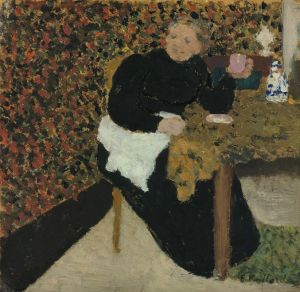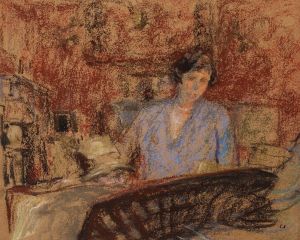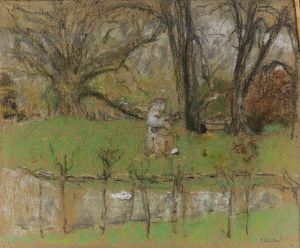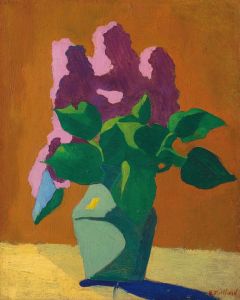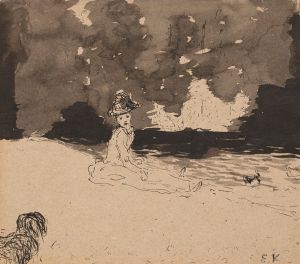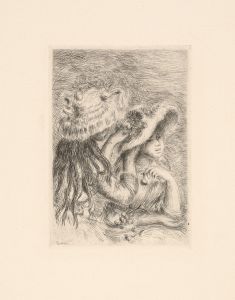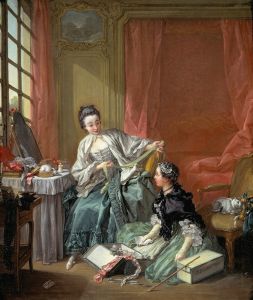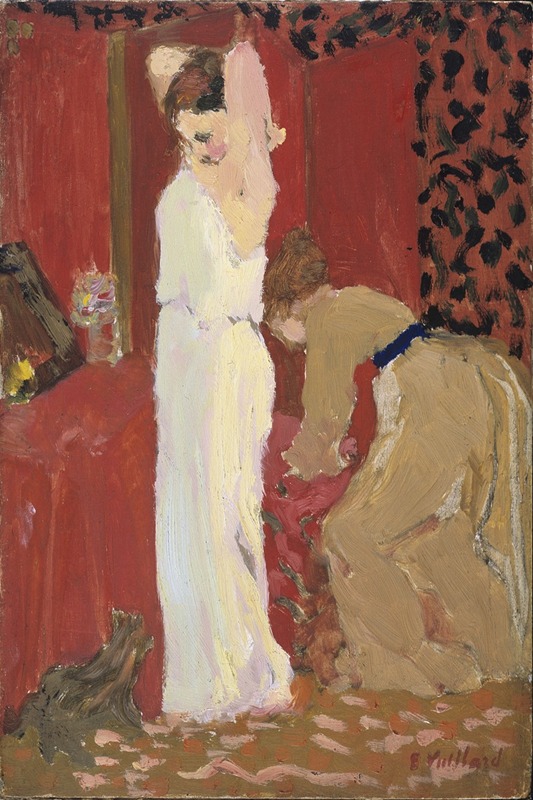
L’Essayage
A hand-painted replica of Édouard Vuillard’s masterpiece L’Essayage, meticulously crafted by professional artists to capture the true essence of the original. Each piece is created with museum-quality canvas and rare mineral pigments, carefully painted by experienced artists with delicate brushstrokes and rich, layered colors to perfectly recreate the texture of the original artwork. Unlike machine-printed reproductions, this hand-painted version brings the painting to life, infused with the artist’s emotions and skill in every stroke. Whether for personal collection or home decoration, it instantly elevates the artistic atmosphere of any space.
Édouard Vuillard's painting L’Essayage (translated as The Fitting) is a work by the French artist, created in 1893. Vuillard, a prominent member of the Nabi group, was known for his intimate domestic scenes and his use of rich, decorative patterns. This painting is a notable example of his ability to merge figures with their surroundings, creating a harmonious and immersive composition.
L’Essayage depicts a scene of women engaged in the process of fitting garments, likely in a dressmaker's studio or a private setting. The painting reflects Vuillard's interest in capturing the quiet, everyday moments of bourgeois life, a theme that recurs throughout his oeuvre. The figures in the painting are rendered with a soft, almost blurred quality, blending into the patterned background and textiles that dominate the composition. This approach emphasizes the decorative and atmospheric qualities of the scene rather than focusing on precise details or individual identities.
Vuillard's use of color and pattern in L’Essayage is characteristic of his style during the 1890s. The painting features a muted yet warm palette, with shades of brown, beige, and soft reds, creating a sense of intimacy and warmth. The patterns on the fabrics and walls are intricately detailed, showcasing Vuillard's fascination with the interplay between figures and their environments. This stylistic choice aligns with the Nabi group's interest in synthesizing fine art with decorative arts, as well as their rejection of traditional academic painting.
The painting is also significant for its exploration of the relationship between people and their surroundings. Vuillard often depicted scenes where the boundaries between figures and interiors seemed to dissolve, reflecting his belief in the interconnectedness of human life and the spaces it inhabits. This approach was influenced by Symbolist ideas and the decorative aesthetics of the late 19th century.
L’Essayage is housed in the Musée d'Orsay in Paris, which holds a significant collection of Vuillard's works. The painting is considered an important example of his early Nabi period and demonstrates his innovative approach to composition, color, and subject matter. It offers viewers a glimpse into the quiet, introspective world that Vuillard sought to capture in his art, making it a valuable piece within the broader context of Post-Impressionist and Symbolist movements.







